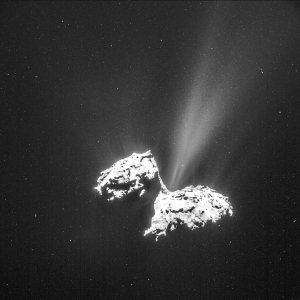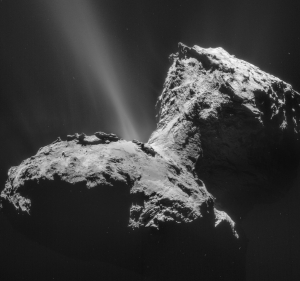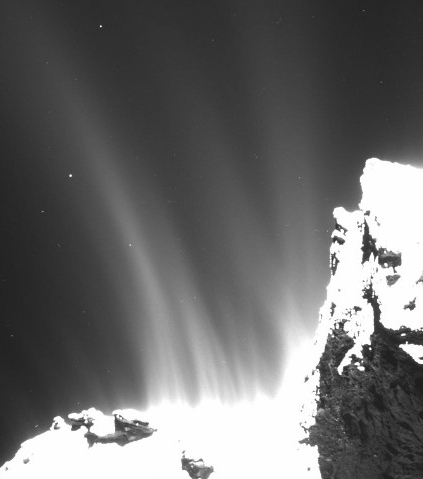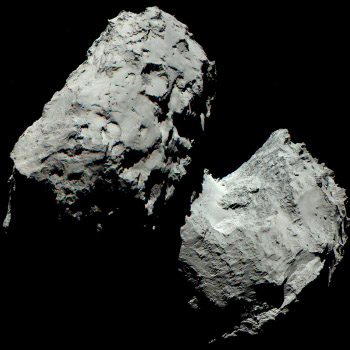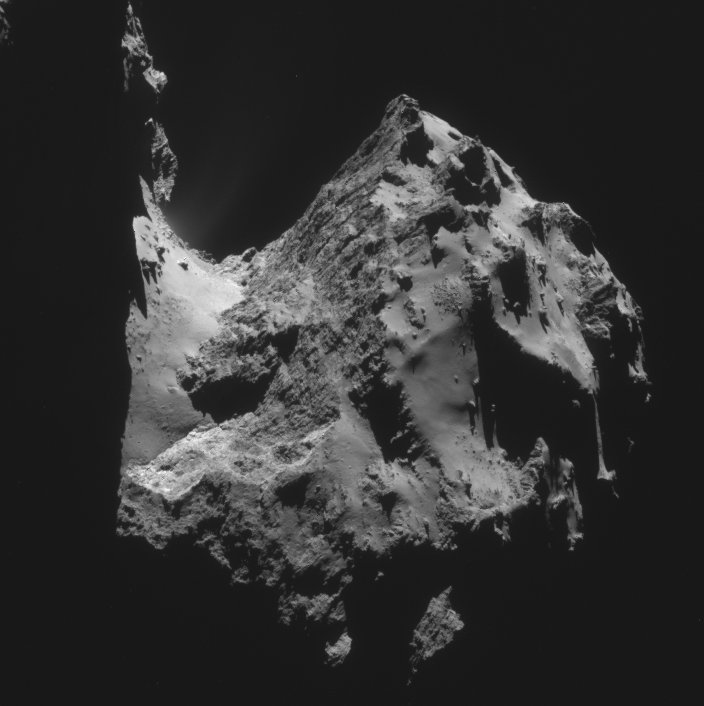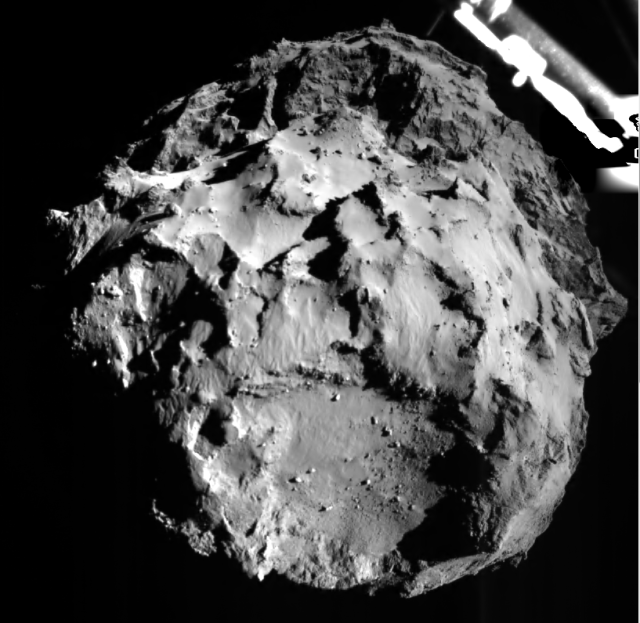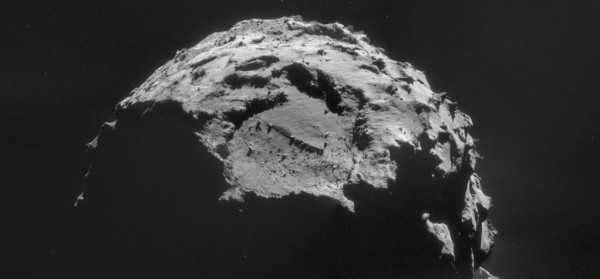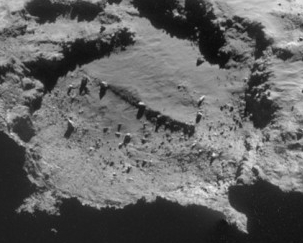Images from Rosetta’s weekend fly-by of Comet 67P/C-G
Link here.
The images are only from the spacecraft’s navigational camera, and while cool, are thus to me not that interesting. What the high resolution camera saw they are once again keeping under wraps, for release later as part of a paper by the scientists involved.
Link here.
The images are only from the spacecraft’s navigational camera, and while cool, are thus to me not that interesting. What the high resolution camera saw they are once again keeping under wraps, for release later as part of a paper by the scientists involved.

